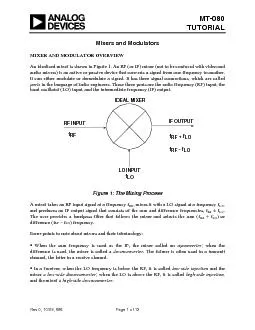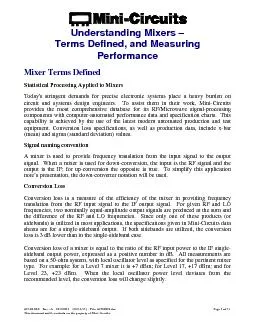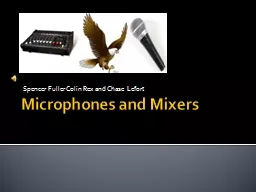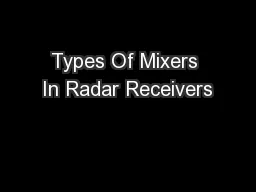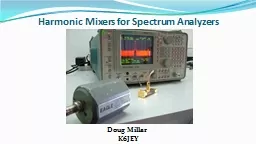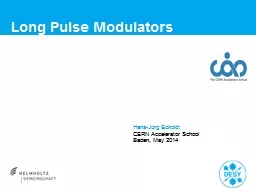PDF-MT-080TUTORIAL Mixers and Modulators
Author : liane-varnes | Published Date : 2017-02-22
IDEAL MIXERLO INPUT RF RF MT080 Each of the outputs is only half the amplitude ar mixer In a practical multiplier the conversion loss may be greater than 6 dB depending
Presentation Embed Code
Download Presentation
Download Presentation The PPT/PDF document "MT-080TUTORIAL Mixers and Modulators" is the property of its rightful owner. Permission is granted to download and print the materials on this website for personal, non-commercial use only, and to display it on your personal computer provided you do not modify the materials and that you retain all copyright notices contained in the materials. By downloading content from our website, you accept the terms of this agreement.
MT-080TUTORIAL Mixers and Modulators: Transcript
Download Rules Of Document
"MT-080TUTORIAL Mixers and Modulators"The content belongs to its owner. You may download and print it for personal use, without modification, and keep all copyright notices. By downloading, you agree to these terms.
Related Documents

